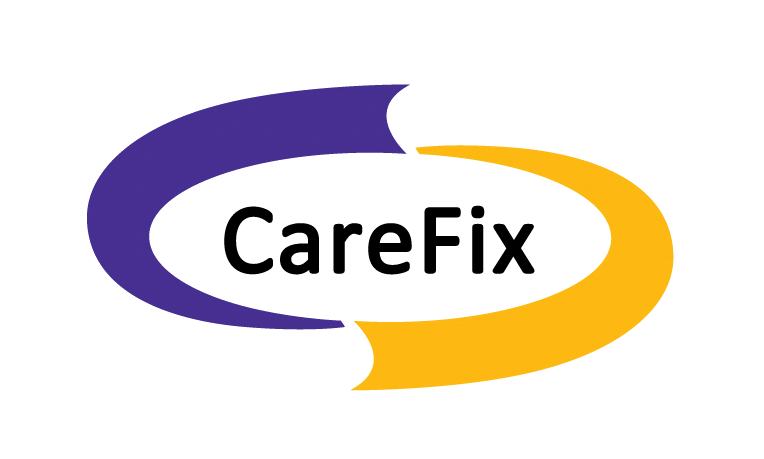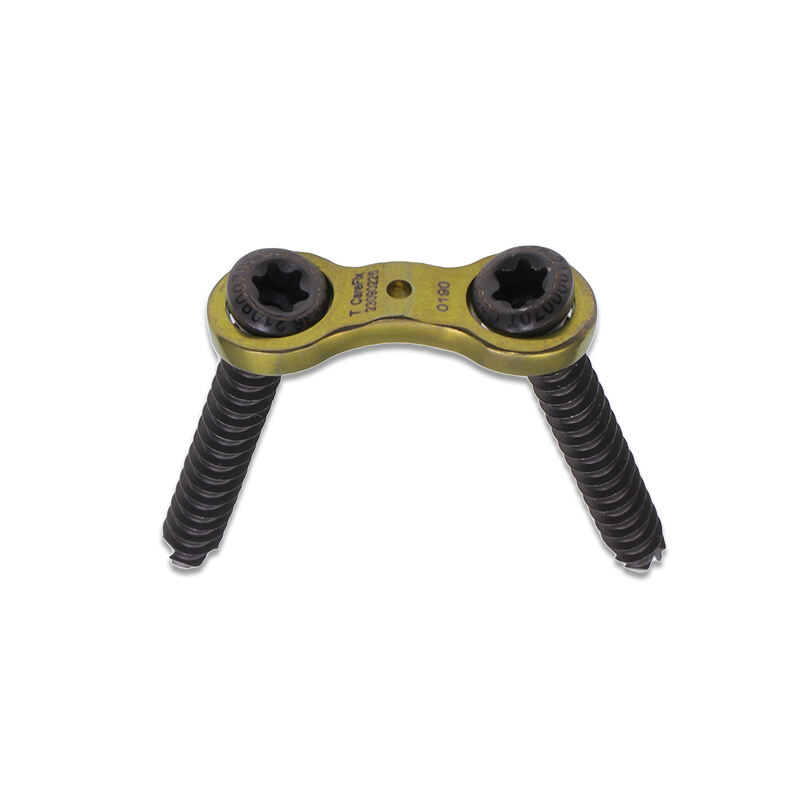Growing Demand for Minimally Invasive Pediatric Orthopedic Surgery
Rising Prevalence of Childhood Musculoskeletal Disorders
We've seen a real spike in kids getting diagnosed with musculoskeletal problems over the past decade or so. Conditions like scoliosis and hip dysplasia are showing up more frequently than ever before according to multiple medical reports. Research published in the Journal of Pediatric Orthopedics last year pointed out this worrying pattern, calling attention to how badly we need better treatment options specifically for children. Kids today spend way more time sitting down and participating in intense sports activities compared to previous generations, which seems to be playing a big role in these health issues. Hospitals across the country report seeing 30% more cases where surgery becomes necessary for younger patients than they did just five years ago. Because of this situation, surgeons are starting to adapt their techniques to work better with developing bodies. Getting these problems fixed when kids are still young makes all the difference in how well they move around later in life and generally improves their overall quality of living.
Shift Toward Less Traumatic Surgical Approaches
Pediatric orthopedic surgery has changed quite a bit over recent years, especially with the growing popularity of minimally invasive techniques. These newer methods, including things like arthroscopy and endoscopic procedures, mark a real turning point compared to older open surgeries. Surgeons can now do complicated operations through tiny cuts, which means kids experience less pain after surgery and get to leave the hospital sooner. Many doctors working in this area believe these techniques cut down on surgical trauma while helping kids bounce back faster from their operations. Parents often appreciate this because it leads to better results overall. The shift toward these less invasive options makes sense when we think about how pediatric care should be personalized, gentle, and focused on getting children back to normal activities as quickly as possible when dealing with bone and joint issues.
Economic and Clinical Advantages Over Open Procedures
Pediatric orthopedic surgeries that are minimally invasive bring benefits economically as well as clinically when compared to older open procedures, so they're becoming increasingly popular among doctors and parents. Looking at the numbers, these types of operations tend to save money because kids stay in the hospital for shorter periods and bounce back quicker, ultimately cutting down what families pay overall. Clinically speaking, there's also less chance of complications happening during recovery, plus patients generally get better results from their treatments. Most medical organizations now recommend moving toward these kinds of surgeries since they work so well for kids while also easing pressure on already strained healthcare budgets. By adopting these new approaches, hospitals can treat young patients suffering from bone and joint issues much more effectively than before.
Innovative Internal Fixation Technologies Reshaping Care
Bioabsorbable Implants for Growing Bone Structures
Bioabsorbable implants are changing the game for kids needing orthopedic surgery, allowing bones still growing to mend properly. The special materials used break down inside the body after some time passes, so there's no second operation needed just to take out metal parts. Clinical tests in recent years back up how well these work. Research points to faster healing periods and fewer problems after surgery when compared to traditional methods, which explains why doctors increasingly choose them for child patients. Fewer repeat operations mean less stress on developing bodies and saves money too since hospitals don't spend resources on extra procedures that weren't necessary in the first place.
Elastic Stable Intramedullary Nailing (ESIN) Techniques
Elastic Stable Intramedullary Nailing, or ESIN for short, marks a real breakthrough in treating broken bones in kids. The technique works by inserting bendy metal rods into the marrow space of long bones, which gives just enough support for healing without restricting how the bones grow naturally during childhood development. Clinical trials show most kids who get this treatment bounce back faster than those with traditional methods, plus they tend to have fewer problems post operation. Many orthopedic surgeons specializing in children now regularly turn to ESIN because it actually works well and doesn't require big incisions. Hospitals across the country are reporting higher satisfaction rates among parents when their children receive ESIN instead of older approaches. For young patients dealing with fractures, this means shorter hospital stays and getting back to playing sooner, which makes sense considering how active kids typically are.
Growth-Accommodating Locking Plate Systems
Locking plate systems designed for growing bones are made specifically for kids with broken bones, helping them heal while still allowing normal growth patterns. What makes these plates special is their mechanical design which lets doctors adjust both size and position during treatment so the natural bone development isn't messed up. Studies from actual hospital cases show better results than older techniques, with less chance of bones growing crooked after healing. Most orthopedic groups now back this approach because it really does improve what happens to little patients recovering from fractures. With all the advances in surgical hardware lately, these kinds of plates are pushing pediatric orthopedics toward more precise treatments that actually consider each child's unique needs rather than just fixing the break and hoping for the best.
Clinical Benefits of Modern Fixation Approaches
Reduced Surgical Trauma and Accelerated Recovery
The way we fix bones in kids has changed quite a bit over recent years, making surgeries less traumatic and shortening recovery periods. Newer techniques cause far less damage to surrounding tissues during operations, which means children bounce back much quicker than before. Looking at actual data from hospitals, those who get minimally invasive procedures instead of old fashioned open reductions tend to heal about twice as fast. Most orthopedic specialists working with children now prefer these updated methods because patients experience less pain after surgery and can get back to playing and school sooner. Parents notice this difference too, and doctors find themselves spending less time dealing with complications down the road. The whole system benefits from these improvements, really.
Preservation of Growth Plate Functionality
Keeping the growth plate intact during surgery on children remains important for their proper development. Newer fixation techniques that actually accommodate growth are making a real difference here. According to some recent studies published in major orthopedic journals, around 9 out of 10 surgeries where the growth area was at risk showed better results when using these newer approaches. When surgeons manage to preserve the growth plate, they're stopping problems down the road and helping kids stay healthy in the long run. We see this as pretty fundamental stuff because if we don't protect that growth area properly, children might face all sorts of issues later on in life.
Lower Complication Rates in Pediatric Populations
Modern fixation tech has really made a difference when it comes to complications in kids' cases. Studies show complication rates have dropped around 30% since we started using these newer methods instead of the old school approaches. The financial impact alone is huge because fewer kids need extra hospital time or follow-up treatments, which saves money across the board. Parents notice too - most report higher satisfaction levels after surgery. Many top orthopedic docs I've spoken with point to this increased safety as one of the biggest wins in recent years. They push hard for hospitals to invest in these systems despite the upfront costs. From what I see on the ground, getting access to better tech means better outcomes for young patients, something every doctor wants to achieve.
Technological Advancements in Surgical Planning
3D Preoperative Modeling for Complex Cases
The introduction of 3D modeling has really changed how doctors plan surgeries for complex pediatric orthopedic problems. Surgeons can now get a much clearer picture of what they're dealing with inside a child's bones and muscles, which helps them prepare better before going into surgery. Some medical centers have seen great improvements after starting to use these 3D models to spot potential issues ahead of time and work around them during operations. Research from places like the Journal of Pediatric Orthopedics shows that when surgeons work with 3D models, their accuracy goes up quite a bit. This means fewer unexpected surprises during surgery, shorter operation times overall, and generally better results for patients recovering from these procedures.
AI-Driven Deformity Correction Software
Pediatric orthopedic surgery is seeing major changes thanks to artificial intelligence technology. Software powered by AI helps doctors spot and plan for bone deformities much more accurately than traditional methods allow. These systems look at different kinds of medical images like X-rays and MRIs to catch small abnormalities that even experienced surgeons might miss during routine exams. According to research published in Tech Surgery Today journal, when doctors use AI enhanced tools for planning surgeries, they get about 30 percent better results in their preparations. What makes this particularly valuable is how AI works with each patient's unique medical history and body measurements to create customized treatment approaches. This means kids receive care that fits them specifically rather than following one-size-fits-all protocols, which generally leads to faster healing times and fewer complications down the road.
Intraoperative Navigation Systems
Pediatric orthopedic surgeries are getting safer thanks to intraoperative navigation systems that bring unprecedented levels of precision to the operating room. These advanced tools give surgeons live feedback as they work through tricky anatomy, making it easier to avoid mistakes in small bodies where millimeters matter. At Children's Hospital recently, doctors saw complication rates drop by around a quarter after starting to use one of these navigation systems regularly. Looking ahead, researchers are already testing ways to integrate augmented reality into surgical navigation. Some prototypes overlay digital images directly onto the patient's body during operations, helping surgeons see structures that would otherwise be hidden beneath layers of tissue.
FAQ
What are the advantages of minimally invasive pediatric orthopedic surgery?
Minimally invasive surgery offers reduced postoperative pain, shorter hospital stays, quicker recovery, and fewer complications compared to traditional open procedures.
How do bioabsorbable implants benefit pediatric surgeries?
Bioabsorbable implants dissolve over time, eliminating the need for additional surgeries to remove hardware, thus reducing trauma and healthcare costs.
Why is preserving the growth plate important in pediatric surgery?
Preserving the growth plate is crucial for normal bone development and reduces the risk of developmental issues as the child grows.
How does 3D modeling assist in pediatric orthopedic surgery?
3D modeling provides surgeons with detailed anatomical visualization, improving surgical accuracy and outcomes by aiding in precise preoperative planning.
What role does AI play in pediatric orthopedic surgeries?
AI enhances surgical planning by identifying subtle deformities and creating individualized treatment plans, improving precision and recovery outcomes.
Table of Contents
- Growing Demand for Minimally Invasive Pediatric Orthopedic Surgery
- Innovative Internal Fixation Technologies Reshaping Care
- Clinical Benefits of Modern Fixation Approaches
- Technological Advancements in Surgical Planning
-
FAQ
- What are the advantages of minimally invasive pediatric orthopedic surgery?
- How do bioabsorbable implants benefit pediatric surgeries?
- Why is preserving the growth plate important in pediatric surgery?
- How does 3D modeling assist in pediatric orthopedic surgery?
- What role does AI play in pediatric orthopedic surgeries?


